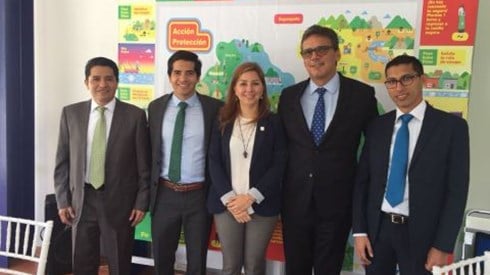Microinsurance Provides Reverse Innovation for Traditional Markets

November 07, 2019

Access to insurance is a key component of financial stability. Support of financial inclusion has taken a greater hold globally as more major insurers and reinsurers incorporate dedicated microinsurance operations, socially-minded impact investors fund microcredit and microinsurance programs in developing countries, and governments extend insurance access to lower-income citizens.
According to A.M. Best, the movement has reached a crescendo after a century of development. Sustainable microinsurance programs are challenging to create, but never has there been a time when there has been so much effort on every level—community, national, and global—to see these efforts to successful execution. Scale, along with a high degree of innovation, is the key to profitability in the microinsurance sector targeting lower-income individuals. To be more cost-efficient, motivated individuals and organizations have been seeking ways to eliminate frictions found in traditional insurance, and, with much trial and error, some have enabled a more successful supply of microinsurance.
Examples of these efforts include index-based insurance to streamline claims processing using measurable indices, like rainfall, to pay out claims automatically to entire policyholder groups. Other microinsurance programs allow people with irregular income streams to pay premiums when the money is available. Mass distribution techniques like mobile phones that reach millions eliminate the need for forms and the exclusions that are common in traditional plans. The distribution of microinsurance requires a different approach from traditional insurance. Including microinsurance as part of cooperative or mutual arrangement also has shown significant success, A.M. Best said.
More offerings from private-sector organizations can add to this product's sustainability. However, profit margins typically are thin, and the efficiencies, proportional regulation, and scale must be carefully internalized and calibrated. For large insurers with the capital to take a loss while establishing systems and infrastructure, the benefit of building brand recognition among an emerging customer base may provide incentive to enter the market. A.M. Best also views the microinsurance market as a laboratory for innovation—the strategies developed to improve efficiency in these markets often can be applied to more traditional markets as a form of reverse innovation.
"The number of those covered by microinsurance is still very small relative to the need," said Andrea Keenan, senior managing director with A.M. Best. "But there is a growing community looking to contribute to financial inclusion efforts. Other initiatives and concepts such as environmental, social, and governance factors in investment policies and priorities have helped to push microinsurance to a tipping point, providing momentum for these financial inclusion solutions."
Although the developed world faces a coverage gap in areas such as flood and cyber, underinsurance is most prevalent in less-developed countries and represents structural weaknesses to their overall economies, A.M. Best said.
Copyright © 2019 A.M. Best Company, Inc.and/or its affiliates ALL RIGHTS RESERVED
November 07, 2019



